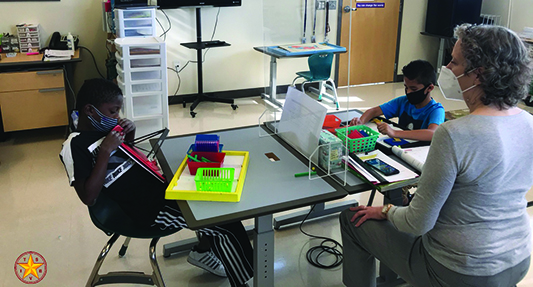“I have already mentioned to [child’s] school that…instead of graduating at age 22, I want him to graduate at age 23 to make up for this year.” —English-speaking parent of a 14-year-old with low vision and additional disabilities.
“I think we’re always going to be kind of feeling a bit behind, but I think we need to keep reminding ourselves that the students really didn’t have any learning loss. They had a loss of opportunity to learn, but what they learned, we found for our students, they retained it pretty well. They just weren’t able to keep that momentum going, and that’s where the gaps are starting to show up, where they might be a year behind because they just haven’t had a full year of opportunity to make those gains.” —Administrator of a school for the blind
It is clear that the changes to educational delivery necessitated by the pandemic have interfered with effective instruction in several areas. During the first and second Access and Engagement studies, educators shared many challenges with effectively teaching certain subjects, particularly parts of the Expanded Core Curriculum (ECC) that must be taught to students who are blind or have low vision. For example, many O&M specialists described the limitations of teaching key O&M concepts, such as cane positioning and accurate street-crossing skills, without being physically present with students. Students’ family members, meanwhile, expressed concern about students’ educational futures in the midst of the pandemic. In November 2020, 160 family members rated their agreement with the statement, “I am concerned about my child’s educational future,” an average of 3.10 on a 4-point scale, significantly above the scale midpoint of 2.5, suggesting a moderate-to-high level of concern.
Are family members, educators, and administrators still concerned about the ongoing impacts of the pandemic on students’ learning now that schools have largely returned to in-person learning? In the current study, participants were asked, via open-ended interviews, to reflect on how they felt the pandemic impacted students’ current and future learning. Responses were mixed. Some families and educators felt that children will need to compensate for the delays caused by remote learning, whereas others felt that children were mostly keeping in step with their educational goals. In some cases, families and educators reported unexpected gains that children experienced as a result of the pandemic, as will be described in a later section of this report.
It is apparent that academic progress did not occur equally during the pandemic. Children who had strong in-home supports, as well as educators with the time and resources to individually support students, reportedly had much more positive learning outcomes than did children with less in-home support, less educator support, and children with multiple disabilities or complex learning needs. Educators described the challenges of delivering instruction to students with less in-home supports, who were sometimes difficult to engage, for example, if they fell asleep during remote lessons. Other educators described the challenges of interacting remotely with students who were attending class from chaotic home settings with minimal supervision.
Finally, the negative impacts of the pandemic were often most pronounced for students in key developmental stages. For example, transition-age students who graduated from high school during the pandemic missed out on opportunities to gain hands-on work-based learning experience or to develop important O&M skills in the community. These students are now out of school and no longer have the opportunity to learn such skills in the school setting. At the other end of the spectrum, young children reportedly missed opportunities to receive hands-on early intervention services and to develop age-appropriate social skills during critical developmental points.
Some representative quotes included:
“His grades dropped. He always receives A’s and B’s, but this time he was getting C’s. His grades dropped because he didn’t understand some topics because they [teachers] struggled to explain the concept [during remote learning].” —Spanish-speaking parent of an 11-year-old who is blind
“The TVI services were nonexistent. We lobbied the Commission to reopen, called our Congressman and our local assemblyman and the director of blindness education. We were vaccinated. Finally, they opened up in May 2021, but we went 16 months without any services. My little one, earlier this year, didn’t know that many new people. Most of her memory had been in a pandemic and she wasn’t used to meeting new people.” —English-speaking parent of a 3-year-old with low vision
“Our students had to learn how to take turns, learn how to separate from parents, learn how to stay on the right side of the hallway. We really started back at ground zero when the children came back to us last spring. But I will also say in a very positive way, we recognize why we’re a team of educators. We miss those children terribly, and we recognized the need that we had to make them feel secure in this crazy time.” —Administrator of a school for the blind
